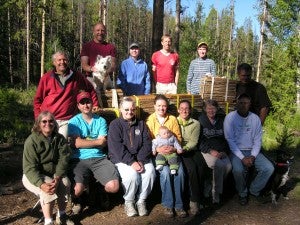Professor, Director of Snake River Plains Herbarium, and PhD EEB Graduate Program Coordinator
Year arrived at BSU: 1992
Mailing Address:
Department of Biology
Boise State University
Boise, ID 83725-1515
Office Location: Science Building, Room 207
Office Number: 208-426-3551
Office Fax: 208-426-4267
E-Mail Address: jfsmith@boisestate.edu
TEACHING
BOT 305 Systematic Botany
BIOL 401 Organic Evolution
BIOL 517 Species and Speciation
BIOL 597 Special Topics: Population Genetics
BIOL 597 Special Topics: Introduction to Bioinformatics
RESEARCH INTERESTS
Phylogenetics of western North American Apiaceae. The Perennial Endemic North American (PENA) clade of Apiaceae consists of 19 genera and ca. 200 species. Recent phylogenetic work using Sanger sequencing has determined that most of the genera are para- or polyphyletic (including the larger genera Lomatium, Cymopterus, and Tauschia) and it is likely that many of the widespread species are harboring cryptic or near cryptic species.
Recent work completed by MS student Michael Ottenlips using data from the Angiosperm 353 baits has resolved some of the taxonomic confusion surrounding the Lomatium packardiae/anomalum subcomplex within the Lomatium triternatum complex.
A recently funded (2019) NSF grant to PIs Mary Ann Feist (University of Wisconsin-Madison), James Smith (Boise State University) and Donald Mansfield (College of Idaho) will attempt to resolve the phylogeny of this group at the species level using next-generation sequencing data, ecology, and morphology.
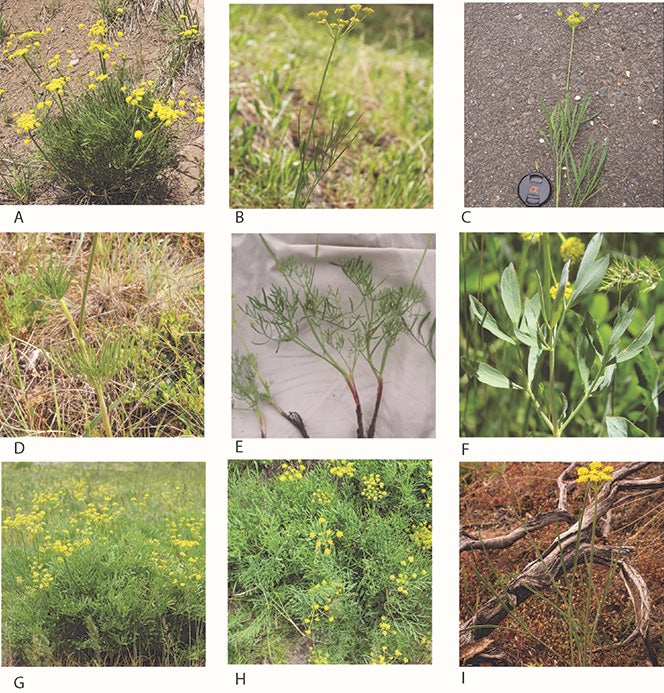
Evolution of Floral Symmetry in Gesneriaceae: Recent work on Antirrhinum and relatives have identified genes important in the control of floral symmetry, cycloidea and dichotoma. Homologs of cycloidea have been identified in Gesneriaceae known as GCYC. Although most Gesneriaceae have flowers with bilateral symmetry a few genera have full or partial radial symmetry (in the latter the corollas are radially symmetric or nearly radially symmetric, but stamen abortion results in 4 instead of 5 stamens). Investigations at the DNA sequence level of GCYC in Gesneriaceae with have not revealed any obvious mutations that may disrupt function of this gene in plants with radially symmetric flowers. Likewise rates of mutation at the DNA level and synonymous to nonsynonymous substitution rates are not significantly different for species with radial or bilateral symmetry. The control of symmetry for these plants must lie in other regulatory genes and investigations at the mRNA level are beginning.
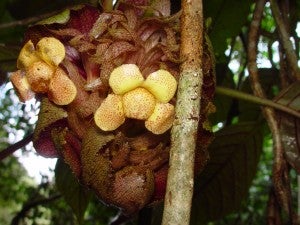
Phylogenetics of tribe Episcieae (Gesneriaceae): The latest study represents and expansion of earlier studies on this tribe that used only a few genes and sampled only a few species for each genus. We sampled more widely from larger genera, sampled some of the more disparate morphological species in each genus and using more sequence data to more strongly support intergeneric relationships. As a result, four new generic names were published to reflect the monophyly in this clade.
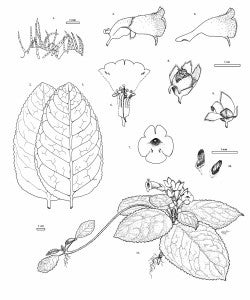
Phylogenetics within Columnea (Gesneriaceae): Columnea is the largest genus within Neotropical Gesneriaceae and all previous attempts to resolve relationships within this genus have been poorly resolved or poorly supported. I have sampled many low copy nuclear genes in an attempt to identify a combination of sequences that will resolve and provide support for relationships within this genus. Currently, in collaborations with John L. Clark of the University of Alabama and Marisol Amaya-Marquez of Universidad Nacional de Colombia we are sampling nearly 40-50% of described species to test the current sectional classification within this clade. Results indicate that no previous subgeneric classification has reflected monophyletic groups and we are in the process of analyzing the data to resolve where new sectional delimitations can be made.
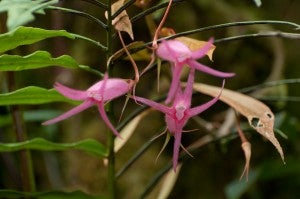
For more information on the Gesneriaceae, see the Tree of Life pages.
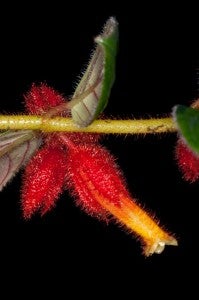
Phylogenetics of Piperaceae: I have been conducting research on the phylogenetics of Piperaceae in collaboration with Dr. Chris Davidson of the Idaho Botanical Research Foundation of Boise, Idaho. Our ultimate goal is to work on the phylogenetics of the family worldwide, but we are currently focusing our efforts on two clades that have been identified as a monophyletic group by both our studies and previous investigations. These are subgenera Enckea and Arctottonia. We are also sampling from several different genes, including low copy nuclear genes. The latter project is also in collaboration with Dr. Allan Bornstein of Southeast Missouri State University, Cape Girardeau, MO.
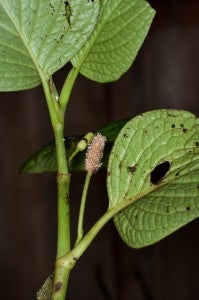
RECENT PUBLICATIONS
Mason, K. M., E. Willie, J. F. Smith, J. Wheeler, and B. L. Wilson. 2019. A new species of Lomatium (Apiaceae) from Red Mountain, a serpentine island in Mendocino County, California. Phytoneuron 2019-10:1-18.
Stevens, M., D. H. Mansfield, J. F. Smith, and M. A. E. Feist. 2018. Resolving the Anomaly of Lomatium anomalum: Discovery of a New Species in Southwestern Idaho (U.S.A.), Lomatium andrusianum (Apiaceae). Journal of the Botanical Research Institute of Texas 12: 1-15.
Mansfield, D. H., B. L. Wilson, J. F. Smith, M. Darrach. 2018. Lomatium filicinum (Apiaceae) A new combination epitypified with Lomatium basalticum. Phytoneuron 2018-33: 1-4.
Smith, J. F., D. H. Mansfield, M. Stevens, E. Sosa, M. A. E. Feist, S. R. Downie, G. M. Plunkett, and M. Darrach. 2018. Try Tri again? Resolving species boundaries in the Lomatium triternatum (Apiaceae) complex. Journal of Systematics and Evolution 56: 218-230.
Smith, J. F., M. T.-Y. Ooi, and J. L. Clark. 2018. Incipient speciation in a neotropical Gesneriaceae: Columnea kucyniakii is nested within C. strigosa. Plant Systematics and Evolution 304: 511-519.
Salomo, K. J. F. Smith, M.-S. Samain, L. Bond, C. Davidson, J. Zimmers, T. S. Feild, C. Neinhuis, and S. Wanke. 2017. The Emergence of Earliest Angiosperms may be Earlier than Fossil Evidence Indicates. Systematic Botany 42: 607-619.
Mansfield, D. H., M. Darrach, S. R. Downie, M. A. Feist, R. L. Hartmann, K. M. Mason, G. M. Plunkett, J. F. Smith, and B. L. Wilson. 2017. New combinations in Pseudocymopterus and Cymopterus (Apiaceae). Phytoneuron 2017-57: 1-4.
Feist, M. A. E., J. F. Smith, D. H. Mansfield, M. Darrach, R. P. McNeill, S. R. Downie, G. M. Plunkett, and B. L. Wilson. 2017. New combinations in Lomatium (Apiaceae, Subfamily Apioideae). Phytokeys 316: 95-98.
Monfils, A.K., K.E. Powers, C. Marshall, C.T. Martine, J.F. Smith, and L.A. Prather. 2017. Natural history collections: Teaching about biodiversity across time, space, and digital platforms. Southeastern Naturalist 16: 47-57.
Zimmers, J. C., M. Thomas, L. Yang, A. Bombareley, M. Mancuso, M. F. Wojciechowski, and J. F. Smith. 2017. Species boundaries in the Astragalus cusickii complex delimited using molecular phylogenetic techniques. Molecular Phylogenetics and Evolution 114: 93-110.
Smith, J. F. and J. C. Zimmers. 2017. New combination in Astragalus (Fabaceae). Phytoneuron 2017-38: 1-3.
Reynolds, N. K., M. E. Smith, E. D. Tretter, J. Gause, D. Heeney, M. J. Cafaro, J. F. Smith, S. J. Novak, W. A. Bourland, M. M. White. 2017. Resolving relationships at the animal-fungal divergence: A molecular phylogenetic study of the protist trichomycetes (Ichthyosporea, Eccrinida). Molecular Phylogenetics and Evolution 109: 447-464.
Smith, J. F., J. L. Clark, M. Amaya-Márquez, and O. H. Marín-Gómez. 2017. Resolving incongruence: Species of hybrid origin in Columnea (Gesneriaceae). Molecular Phylogenetics and Evolution 106: 228-240.
Mansfield, D. H., M. Stevens, L. Polito, J. F. Smith and M. Darrach. 2016. Lomatium basalticum (Apiaceae): A new species form the vicinity of Hells Canyon in Oregon and Idaho. Phytoneuron 2016-74: 1-13.
Schulte, L. J., J. L. Clark, S. J. Novak, S. K,. Jeffries, and J. F. Smith. 2015. Speciation within Columnea section Angustiflorae (Gesneriaceae): Islands, pollinators and climate. Molecular Phylogenetics and Evolution 84: 125-144.
George, E. E., D. H. Mansfield, J. F. Smith, R. L. Hartman, S. L. Downie, and C. E. Hinchliff. 2014. Phylogenetic Analysis Reveals Multiple Cases of Morphological Parallelism and Taxonomic Polyphyly in Lomatium (Apiaceae). Systematic Botany 39: 662-675.
Schulte, L. J., J. L. Clark, S. J. Novak, M. T.-Y. Ooi, and J. F. Smith. 2014. Paraphyly of Section Stygnanthe (Columnea, Gesneriaceae), a New Section Inferred from ITS and Chloroplast DNA Data, and a Revision of the Species of Section Angustiflorae Systematic Botany 39: 613-636.
Bornstein, A. J., J. F. Smith and E. J. Tepe. 2014. Two new species of Piper from the Greater Antilles. Systematic Botany 39: 10-16.
J. F. Smith, M. Amaya-Marquez, O. H. Marin-Gomez, and J. L. Clark. 2013. Four new species of Columnea (Gesneriaceae) with primary distributions in Colombia. submitted to Journal of the Botanical Research Institute of Texas. 7: 667-679.
Smith, J. F., M. T. Ooi, L. Schulte, M. Amaya-Marquez, and J. L. Clark. 2013. Searching for monophyly in the subgeneric classification systems of Columnea (Gesneriaceae). Selbyana 31: 126-142.
Ning, A.-L., J. Wang, J. F. Smith, and M. Kang. 2013. Primulina qingyuanensis sp. nov. (Gesneriaceae) from limestone areas in Guangdon, China. Phytotaxa 137: 48-52.
Gaskin, J. F., M. Schwarzländer, C. L. Kinter, J. F. Smith and S. J. Novak, . Propagule pressure, genetic structure and geographic origins of Chondrilla juncea (Asteraceae): An invader on three continents. American Journal of Botany 100: 1871-1882.
J. F. Smith and J. L. Clark. 2013. Molecular phylogenetic analyses reveal undiscovered monospecific genera in Episcieae (Gesneriaceae). Systematic Botany 38: 451-463.
Ning, Z.-L., G.-F. Li, J. Wang, J. F. Smith, H. Rasolonjatove, and M. Kang. 2013. Primulina huaijiensis (Gesneriaceae) a new species from Guangdon, China. Acta Botanica Fennici 50: 119-122.
Clay, D. L., D. C. Tank, S. J. Novak, M. D. Serpe, and J. F. Smith. 2012. Homoploid hybrid speciation in a rare endemic Castilleja from Idaho (Castilleja christii, Orobanchaceae). American Journal of Botany 99: 1976-1990.
Amaya M., M. and J. F. Smith. 2012. Columnea paraguensis (Gesneriaceae) a remarkable and rare new species from Colombia. Rev. Acad. Colomb. Cienc. 36: 137-140.
Clark, J. L., M. M. Funke, A. M. Duffy, and J. F. Smith. 2012. Phylogeny of a Neotropical clade in the Gesneriaceae: More tales of convergent evolution International Journal of Plant Sciences. 173: 894-916. Featured on cover.
Schubert, H. K., A. J. Bornstein, M. S. Taylor, and J. F. Smith. 2012. A Systematic Revision of the Genus Manekia (Piperaceae). Systematic Botany 37: 587-598. Featured on cover.
Carlson, K. M., D. H. Mansfield, and J. F. Smith. 2011. A new variety of Lomatium ravenii (Apiaceae) from the northern Great Basin and adjacent Owyhee region. Aliso 29(2):105-114.
Symmank, L., M.-S. Samain, J. F. Smith, G. Pino, A. Stoll, P. Goetghebur, C. Neinhuis, and S. Wanke. 2011. The extraordinary journey of Peperomia subgenus Tildenia (Piperaceae): insights into diversification and colonization patterns from its cradle in Peru to the Tans-Mexican volcanic belt. Journal of Biogeography. 38: 2337-2349.
Clark, J. L. and J. F. Smith. 2011. Columnea pygmaea, a new small-flowered species from Ecuador. Journal of the Botanical Research Institute of Texas 5: 87-95.
Carlson, K. M, D. H. Mansfield, and J. F. Smith. 2011. A New Species in the Lomatium foeniculaceum (Apiaceae) Clade Revealed Through Combined Morphometric and Phylogenetic Analyses. Systematic Botany 36: 495-507. Featured on cover.
Woo, V. L., Smith, J. F., M. M. Funke, P. J. Lockhart, and P. J. Garnock-Jones. 2011. Phylogenetic relationships in Coronanthereae (Gesneriaceae) reveal multiple introductions from South America into the Pacific. International Journal of Plant Sciences 172: 434-457.
Wang, Y.-Z., R.-B. Mao, Y. Li, J.-M. Li, Y. Dong, Z.-Y. Li, and J. F. Smith.. 2011. Phylogenetic reconstruction of Chirita and allies (Gesneriaceae) with taxonomic treatments. Journal of Systematics and Evolution.49: 50-64.
Smith, J. F., D. N. Perkins, C. Bjork, and G. Glenne. 2010. AFLP analyses reveal species boundaries within Pyrrocoma (Asteraceae). Madroño. 57: 95-105.
Smith, J. F. , A. J. Stillman, S. R. Larson. C. M. Culumber, I. C. Robertson , and S. J. Novak. 2009. Phylogenetic relationships among Lepidium papilliferum (L. Henderson) A. Nels & J. F. Macbr., L. montanum Nutt., and L. davisii Rollins (Brassicaceae). Journal of the Torrey Botanical Club 136: 149-163.
Herbarium
As director of the Snake River Plains Herbarium at Boise State University (SRP), I have seen the collection grow from a small teaching collection of ~6,000 specimens to a research and reference collection of ~50,000 specimens. The collection focuses primarily on plants of southwest Idaho, but we continue to add plants from throughout Idaho and surrounding states. The collection continues to expand through collections of faculty and students as well as an active exchange program. For information about exchange contact Dr. James Smith, jfsmith@boisestate.edu.
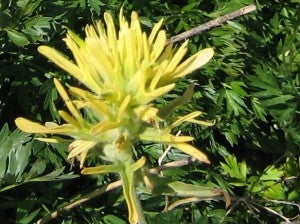
The first Idaho Botanical Foray was held in 2008, click here for a summary of that foray and updates on future forays and workshops.
